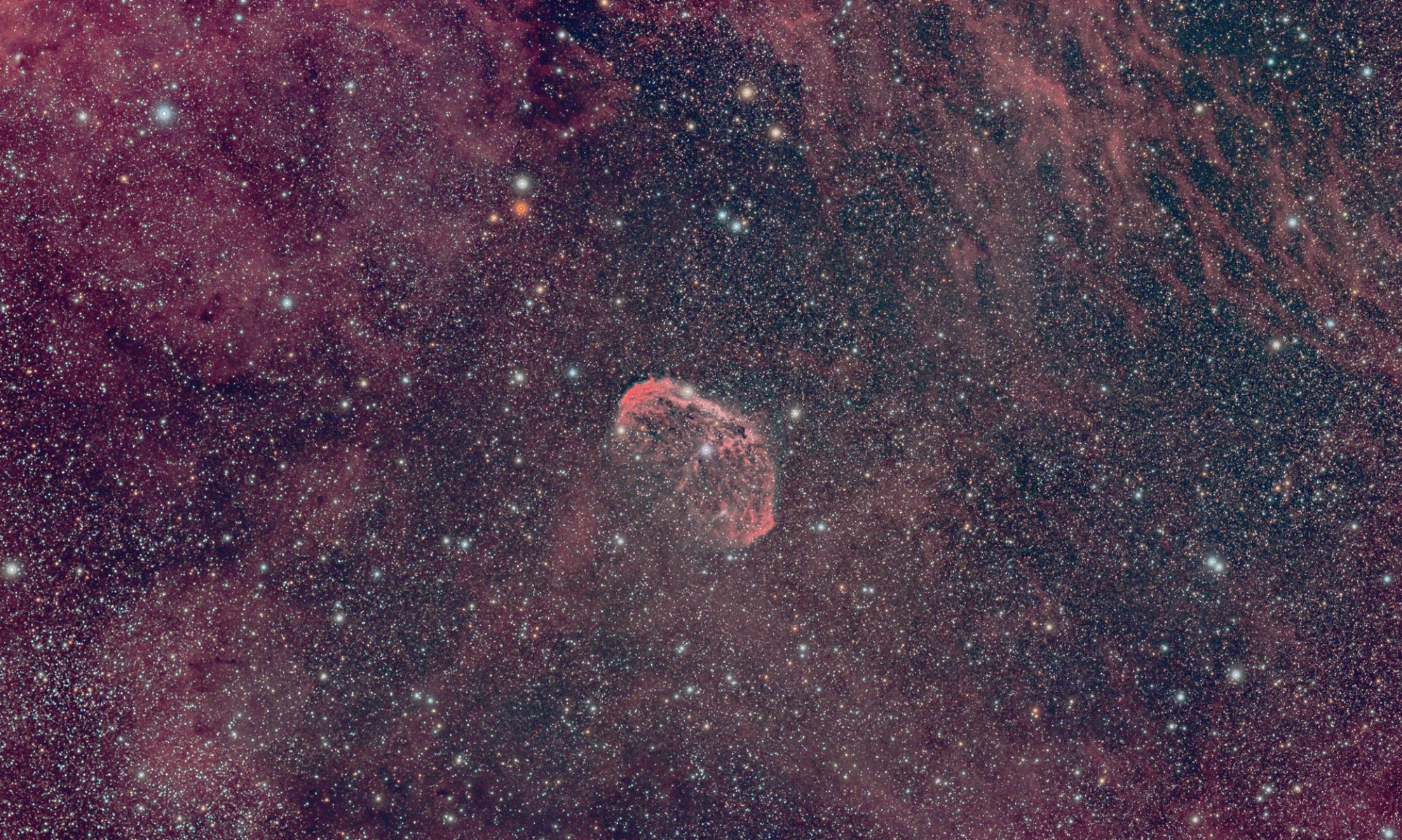I have been working with the QHY Polemaster to do polar alignement on the EQ8. And it works great. But after alignement is done, the 350€ worth of equipment disappears back in its box.
Here is how I made it useful beyond the pole (click on the image to enlarge)

The Esprit 120mm with the ASI183MM at the focal plane, the 400mm telelens with the ASI290MM, and the QHY Polemaster mounted instead of the finder.
When finding an object, I usually use a red dot finder, or a classic 8×50 finder. However, when firing up Cartes du Ciel, and syncing on a first star to align telescope and CdC, these optical devices require you to step away from the laptop screen. And – because I’m not using a gamecontroller (wired or wireless) to move the telescope, I also need to step back to the laptop to press the arrows and make guestimate corrections (since at the laptop, I don’t see the target moving in the finderscope).
So I removed the finderscope and replaced it with the Polemaster. For polar alignement it does not matter where it is positioned on the scope, as long as it is able to see the pole, and as long as it rotates on RA that’s ok. Works great.
But now, since it is looking directly where the main scope is looking at, I can use the Polemaster as a finder. To do so, I don’t use Sharpcap or Firecapture (to many driver issues). I simply use the Polemaster software, but keep it at step 1 after connecting the camera. I set the gain and exposure to maximum. Yes, I do not have crosshairs, and no that doesnt matter. With any reasonably sized sensor at the 663mm F/5 focus of the Esprit, positioning the target more or less in the center is sufficient to make it appear on the main screen in Sequence Generator Pro or Sharpcap or equivalent. Then it’s only a matter of finetuning, and sync Cartes du Ciel.
The QHY5II is a Black-and white USB2 MicronMT9M001 cmos camera, with a resolution of 1.280 x 1.024 pixels (1,28Mp) with square pixels of 5,2µm. The chip measures 6,7 by 5.3 mm. The quantum efficiency is measured as 56%

The screenshot above gives an idea what the view looks like. This is Coma Berenice (next to Virgo) and it shows stars to about 8th magnitude.
In combination with the F 1.2 ; 25 mm CCTV lens this sensor gives an image of 921 x728 arc minutes or approximitely 15 x 12 degrees. The resolution is 42″ per pixel.
I’m happy with the solutions as there is no need to buy extra equipment, I put to use what I have and it works without hickhups (on a USB 3 hub); No need anymore to lie down on the ground or bend myself as a snake in awkward angles to look through the finder.
Positioning the view of the Polemaster is done with the two set screws of the “Witty” Alt/Az system I used to position the finderscope.
Discover more from DROGENBERG
Subscribe to get the latest posts sent to your email.

